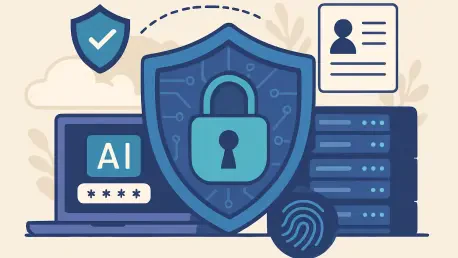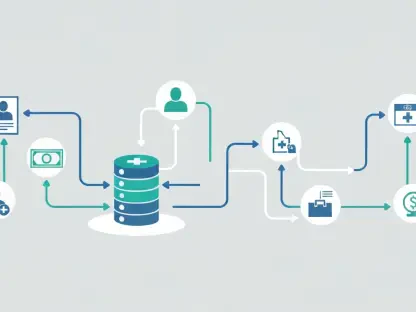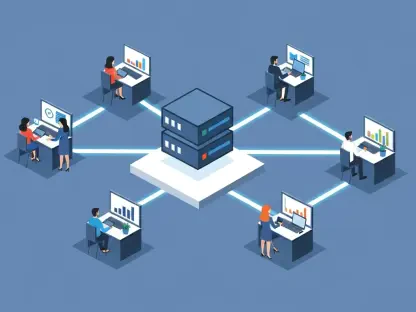In an era where digital threats evolve at an unprecedented pace, artificial intelligence (AI) has emerged as a game-changer in the realm of data security, offering tools that can outsmart traditional defenses while simultaneously introducing complex vulnerabilities that challenge even the most robust systems. From smarter spam filters that catch phishing attempts before they reach inboxes to banking systems that detect fraudulent transactions in real time, AI’s influence is undeniable. Yet, this same technology can be a double-edged sword, empowering attackers with sophisticated methods to exploit systems. Understanding how AI both strengthens and jeopardizes data protection is critical for organizations navigating this landscape. The balance between leveraging AI’s capabilities and mitigating its risks shapes the future of cybersecurity, demanding a closer look at its applications, potential pitfalls, and actionable safeguards.
1. AI’s Transformative Role in Protecting Data
AI’s ability to handle massive datasets with speed and precision has revolutionized data security practices across industries. Security teams are inundated daily with information from login records, network activity, emails, and application logs. Manually sifting through this deluge to identify threats is no longer feasible. AI steps in by analyzing patterns at a scale and speed unattainable by humans, flagging anomalies that could indicate a breach. Notably, a survey revealed that 54% of U.S. respondents consider network traffic monitoring the primary use of AI in cybersecurity across North America. This capability allows for real-time threat detection, ensuring that potential issues are addressed before they escalate into significant problems.
Beyond detection, AI enhances security through automated responses and predictive analysis. When a potential breach is identified, AI systems can instantly isolate affected devices, block malicious IP addresses, or alert the appropriate personnel, minimizing damage through rapid action. Additionally, by studying historical incident data, AI can anticipate future threats, shifting security from a reactive to a proactive stance. However, despite these advancements, AI is not a cure-all. Human error remains a persistent issue, as evidenced by a high-profile incident where Microsoft researchers inadvertently exposed 38 terabytes of internal data due to a misconfiguration on a public platform. This underscores that while AI provides powerful tools, human oversight remains indispensable.
2. Emerging Threats Posed by AI in Data Security
While AI fortifies defenses, it also amplifies the risks within the cybersecurity arena, accelerating the perpetual race between protectors and adversaries. The integration of AI into security systems introduces new attack vectors that exploit the technology’s reliance on data and algorithms. One significant danger is data poisoning, where malicious actors introduce false or misleading information into training datasets. Such tampering can lead AI systems to make erroneous decisions, like misidentifying individuals in facial recognition or providing inaccurate medical predictions. The insidious nature of this threat lies in its delayed detection—often, the damage is done before the corruption is even noticed, posing severe consequences for critical applications.
Another pressing concern is the use of adversarial inputs, subtle manipulations to data that deceive AI systems without being noticeable to human observers. For instance, a slight alteration to a traffic sign could mislead an AI into misinterpreting it, creating real-world safety hazards. Additionally, attackers can extract sensitive information through model inversion, querying systems to reveal underlying training data, such as personal details or internal documents. AI-powered attacks, like malware that evades detection until reaching its target or generative models crafting convincing phishing emails, further complicate the threat landscape. Internal risks, including insider misuse and configuration errors, compound these issues, highlighting that AI’s complexity can exacerbate existing vulnerabilities if not carefully managed.
3. Critical Strategies for Securing AI Systems
Implementing robust measures to protect AI systems is essential to harness their benefits while preventing potential breaches. One foundational step is to establish stringent access controls from the outset. Defining clear roles, enforcing strong authentication methods, and eliminating unnecessary permissions are vital practices. Role-based access control (RBAC) and multi-factor authentication (MFA) should be standard, alongside regular monitoring of access logs. Given that AI systems often interact with multiple data sources and cloud services, any unsecured link can jeopardize the entire framework. Prioritizing access security minimizes the risk of unauthorized entry, ensuring that only authorized personnel interact with sensitive components.
Equally important is securing the data training pipeline to maintain the integrity of AI outputs. The quality and safety of input data directly influence a model’s performance and resilience against manipulation. Vetting data sources for reliability and potential tampering is a must, as is encrypting and restricting access during storage and transfer. Training environments should be treated as critical infrastructure—isolated from the open internet, backed up regularly, and subject to detailed change logs. For cloud-based setups, verifying permissions on storage buckets is non-negotiable. Additionally, embracing data minimization by collecting only essential information and regularly purging outdated datasets reduces exposure. AI tools can assist in identifying redundant or sensitive data, streamlining this process and shrinking the attack surface effectively.
4. Advanced Protection for AI Models and Pipelines
Beyond initial safeguards, protecting AI models and development pipelines after deployment is a critical aspect of maintaining data security. Models, once trained, become valuable targets for reverse-engineering or data extraction attempts. Securing APIs and endpoints that serve these models is paramount, using authentication, rate limits, and continuous monitoring to prevent abuse. For cloud deployments, encryption and private access configurations are non-negotiable. Advanced techniques like model watermarking or digital signatures can verify integrity, ensuring models haven’t been altered or copied illicitly. In high-risk scenarios, adversarial hardening during training—exposing models to manipulated inputs—builds resilience against deceptive attacks, fortifying them for real-world challenges.
Securing the MLOps or DevSecOps pipeline is another crucial layer of defense often overlooked. Development workflows, including continuous integration and delivery (CI/CD), must be locked down to prevent unauthorized updates or insertions of malicious code. Storing secrets securely, maintaining separation between training, staging, and production environments, and scanning for vulnerabilities in model files and dependencies are all essential steps. A rollback plan should always be in place to recover from potential breaches. Integrating AI with existing security tools, such as SIEM platforms or firewalls, further enhances protection by adapting rather than overhauling established systems. These combined efforts ensure that AI remains a strength rather than a liability in the security ecosystem.
5. Navigating the Regulatory Landscape for AI Security
AI data security cannot be fully addressed without considering the regulatory frameworks that govern data usage and system deployment. Laws like GDPR in Europe and CCPA/CPRA in California impose strict guidelines on handling personal data, directly impacting AI systems trained on customer information for decisions in areas like credit scoring or hiring. The forthcoming EU AI Act introduces a risk-based classification, with high-risk systems—such as those involving biometrics or surveillance—facing rigorous documentation, human oversight, and security requirements. In the U.S., while a unified AI law is absent, sector-specific regulations like HIPAA for healthcare and GLBA for finance, alongside emerging state-level mandates, shape how AI must be implemented with transparency and fairness in mind.
To align with these standards, organizations should adopt a proactive compliance strategy. Mapping data flows within AI systems, classifying data by sensitivity, and documenting model behavior and decision-making processes are fundamental steps. Maintaining records of user consent, access requests, and third-party data interactions, coupled with regular audits and impact assessments, builds a robust foundation. Even for entities outside heavily regulated sectors, adopting such practices fosters trust and resilience in AI operations. Viewing compliance as a security asset rather than a burden prepares organizations for evolving legal expectations, ensuring they remain adaptable as new regulations emerge on the horizon.
6. Reflecting on AI’s Dual Impact in Security
Looking back, the journey of integrating AI into data security revealed a landscape of remarkable innovation paired with persistent challenges, as threats continuously adapted alongside technological advancements. The rapid evolution of AI-driven defenses and attacks underscored that security was never a static achievement but a dynamic process requiring vigilance. Historical missteps, such as major data exposures due to simple configuration oversights, served as stark reminders that technology alone couldn’t safeguard systems without human diligence.
Moving forward, the focus should shift toward actionable strategies that anticipate future shifts in the threat environment. Organizations must prioritize continuous improvement, investing in training for teams to handle AI tools effectively while embedding security into every stage of system development. Collaboration between industry stakeholders to share threat intelligence and best practices can further strengthen collective defenses. As AI redefines the benchmarks for both protection and exploitation, staying ahead demands not just adoption of cutting-edge tools but a commitment to evolving policies and skills that outpace emerging risks.









